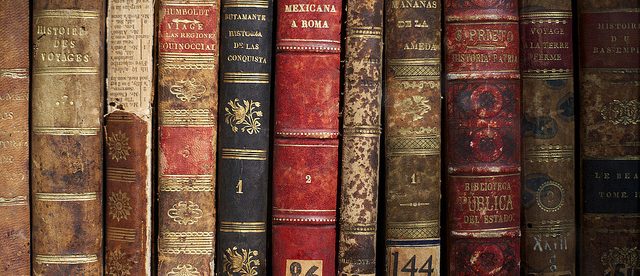The Struggle to Preserve What History Smells Like

You’re reading these words on your phone, computer, or another device; or maybe you printed it out and are reading it on paper. Maybe you’re eating breakfast, or on a train commuting to work, or (we won’t tell) in the bathroom. The words you’re seeing are the same as everyone else. But when it comes to your other senses — touch and smell, in particular — that’s specific to you. Turn this into a book and the tactile aspect becomes similar for everyone; turn it into a podcast or radio show and the audible component becomes the same. But when it comes to the smell, that’s going to be your own, personal experience.
For an email newsletter of random trivial stories, that’s probably okay. But when it comes to the historical experiences of others, we probably want as complete of a picture as possible. What did Michelangelo’s nose sense as he painted the Sistine Chapel? What were poets smelling as they put pen to paper? What vile odors did generals experience as they surveyed the battlefields of gruesome skirmishes? The history books don’t really capture these things.
Cecilia Bembibre wants to fix that.
Bembibre is a Ph.D. candidate at the Institute of Sustainable Heritage at University College London. She, as the Atlantic summarizes better than I could, “is trying to understand which scents are worth hanging on to, what they consist of, on a molecular level, and how to save them. Her aim is to allow others, perhaps many generations down the line, to smell them, too, and understand why they mattered so much.” She wants to bring another one of our senses into our appreciation for what the world before us was like.
Her first major effort focused on old books. That made sense to her faculty advisor, Matija Strlič, a professor of heritage science with a background in chemistry. He told the Guardian that “librarians have told us that it’s the smell that hits readers first. It’s the way libraries communicate before people even get to the books; but what the books communicate through smell is also interesting.” And it’s also largely unknown and unquantified. While we can measure and record the chemical composition of smells, that’s a rather antiseptic way to catalog something which should trigger an emotional response. So the two expanded to a multidisciplinary approach.
Bembibre’s smelling system involves a lot of different tests. Some are very low tech; she’ll ask volunteers to smell things and give short descriptions of what they sensed, allowing her to create a modern equivalent for whatever the scents the old books are emitting. Others tests are extraordinarily high tech, like this one described by Atlas Obscura:
One is known as the Headspace technique, wherein an object is placed inside a clean, sealed bag that has a valve on it, sealing in the volatile organic compounds, or VOCs. Then an absorbent carbon fiber is inserted into the valve to soak up the ambient VOCs that have been isolated inside. She also uses another method, known as passive diffusion, which involves leaving a sort of carbon sponge in a space and allowing it to just soak up the nearby smells.
Once the VOC-laden sample is ready, Bembibre runs it through a gas chromatographer and mass spectrometer, which she describes as a “big nose.” In the end, she is left with a sort of electrocardiogram, but for smells, which she can use to identify the various chemicals in a smell.
The combination of these tests allows her to come up with a “recipe” of sorts; if you wanted to recreate the smell later, Bembibre, through her research, is able to give details instructions for how to do that.
While many smells have been lost to the past — the smell of old books, for example, is caused by the books’ decay, not by the environment in which they were originally written — the smells of today may be able to be captured and preserved by Bembibre’s system. When future generations want to learn about what life was like in 2018, they’ll certainly be able to read about and watch videos about it — and maybe, they’ll be able to smell it, too.
Bonus fact: In the 1970s, British intelligence agency MI5 had an innovative way to use smells to detect potential terrorists. Gerbils — yes, the rodents people sometimes keep as pets — can be trained to smell increases in adrenaline. That, M15 believed, could help sniff out malfeasors — if the gerbils detected a certain smell, authorities could swoop into action. But, there was a downside, as the BBC reported: “many [of the gerbils] could not tell the difference between terrorists and passengers who were scared of flying.” The program was terminated before it could be put into action.
From the Archives: Grass-o-s: That distinctive smell of freshly cut grass? It’s a warning.
